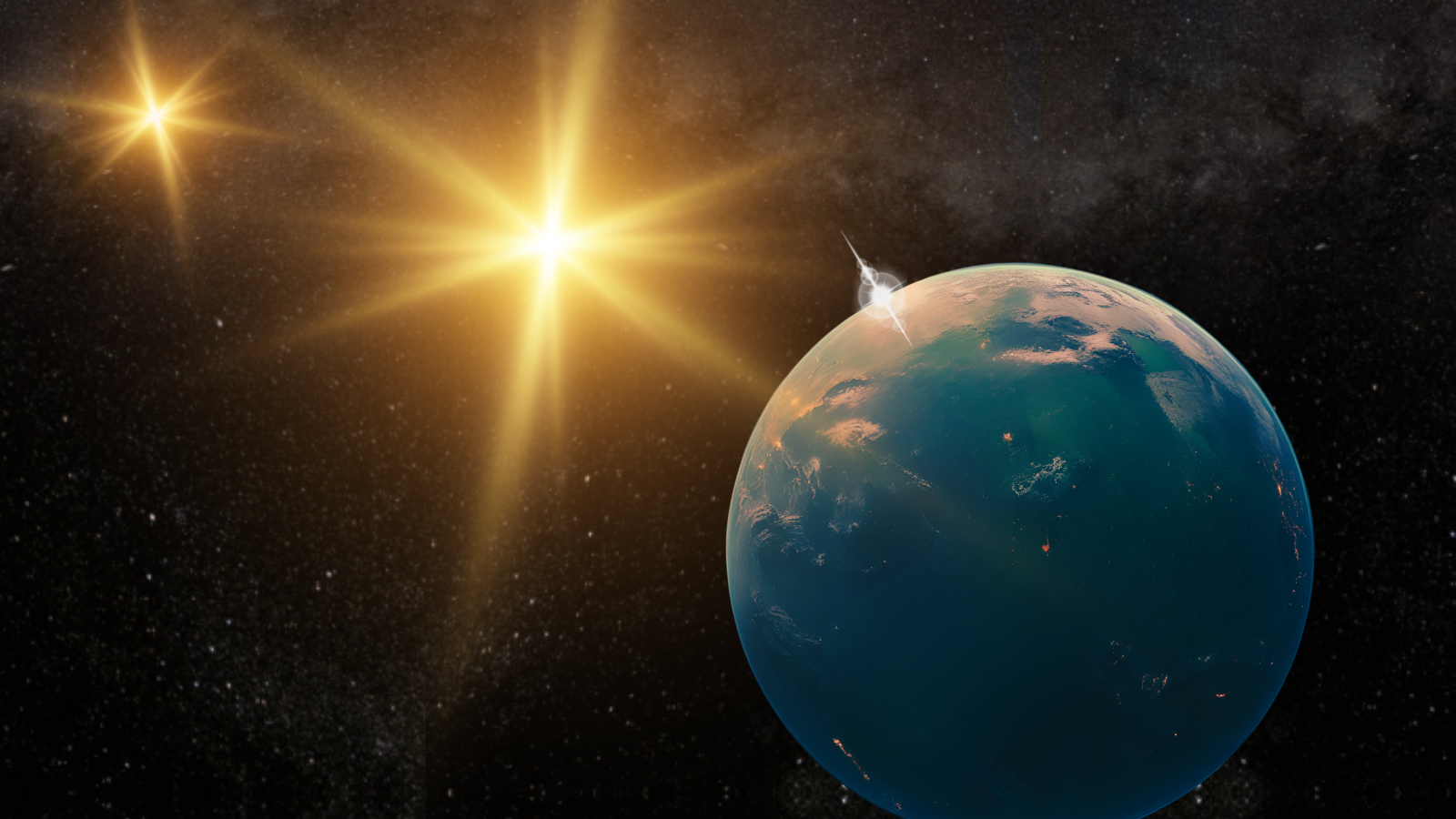James Webb Space Telescope spies galaxies merging around 'monster' black hole

Astronomers have discovered a cluster of galaxies merging around a rare red quasar, a "monster" supermassive black hole that is greedily feeding on gas and other material.
An international team of scientists made the surprising discovery as they were using the James Webb Space Telescope (JWST) to stare billions of years back in time. The finding represents an opportunity to observe how early galaxies merged forming the universe as we see it today. The blindingly bright quasar and extremely red quasar, known as SDSS J165202.64+172852.3, is about 11.5 billion years old and one of the most powerful ever seen from a such tremendous distance away, according to the researchers, who describe it as a black hole in formation.
"We think something dramatic is about to happen in these systems," Andrey Vayner, research co-author and an astrophysicist at Johns Hopkins University in Maryland, said in a statement. "The galaxy is at this perfect moment in its lifetime, about to transform and look entirely different in a few billion years."
Related: The James Webb Space Telescope is on the hunt for the universe's 1st-ever supermassive black holes
Earlier observations of this region of space using the Hubble Space Telescope and the Gemini-North telescope in Hawaii had revealed the quasar and hinted at a galaxy in a transitional phase. But it was only further observation with JWST that revealed not one but at least three galaxies all swirling around the quasar.
"With previous images, we thought we saw hints that the galaxy was possibly interacting with other galaxies on the path to a merger because their shapes get distorted in the process and we thought we maybe saw that," Nadia L. Zakamska, co-principal investigator and Johns Hopkins astrophysicist, said in the same statement. "But after we got the JWST data, I was like, 'I have no idea what we're even looking at here, what is all this stuff!' We spent several weeks just staring and staring at these images."
The JWST images of the region also showed that the three galaxies are moving incredibly quickly, suggesting the presence of a tremendous mass, which leads the team to think this could be the densest area of galaxy formation ever seen in the early universe.
Breaking space news, the latest updates on rocket launches, skywatching events and more!
"Even a dense knot of dark matter isn't sufficient to explain it," Dominika Wylezalek, an astronomer at Heidelberg University in Germany who led the research, said in a Webb statement. "We think we could be seeing a region where two massive halos of dark matter are merging together."
Even Vayner, who had imagined observing this quasar with JWST as much as a decade ago, was shocked that the space telescope, which only started sending science images back to Earth in July, has produced observations of the region with such clarity.
"It really will transform our understanding of this object," he added.
The team will now attempt to follow up this observation of this unexpected galaxy cluster hoping to decipher the secrets of how such dense groupings of galaxies formed in the early universe and how this process is affected by the supermassive black holes that lurk at their hearts.
"What you see here is only a small subset of what's in the data set," Zakamska said.
"There's just too much going on here so we first highlighted what really is the biggest surprise," she said. "Every blob here is a baby galaxy merging into this mommy galaxy and the colors are different velocities and the whole thing is moving in an extremely complicated way. We can now start to untangle the motions."
The team's research is being published in the Astrophysical Journal Letters and a preprint is also available on the paper repository arXiv.
Follow us on Twitter @Spacedotcom and on Facebook.

Robert Lea is a science journalist in the U.K. whose articles have been published in Physics World, New Scientist, Astronomy Magazine, All About Space, Newsweek and ZME Science. He also writes about science communication for Elsevier and the European Journal of Physics. Rob holds a bachelor of science degree in physics and astronomy from the U.K.’s Open University. Follow him on Twitter @sciencef1rst.
